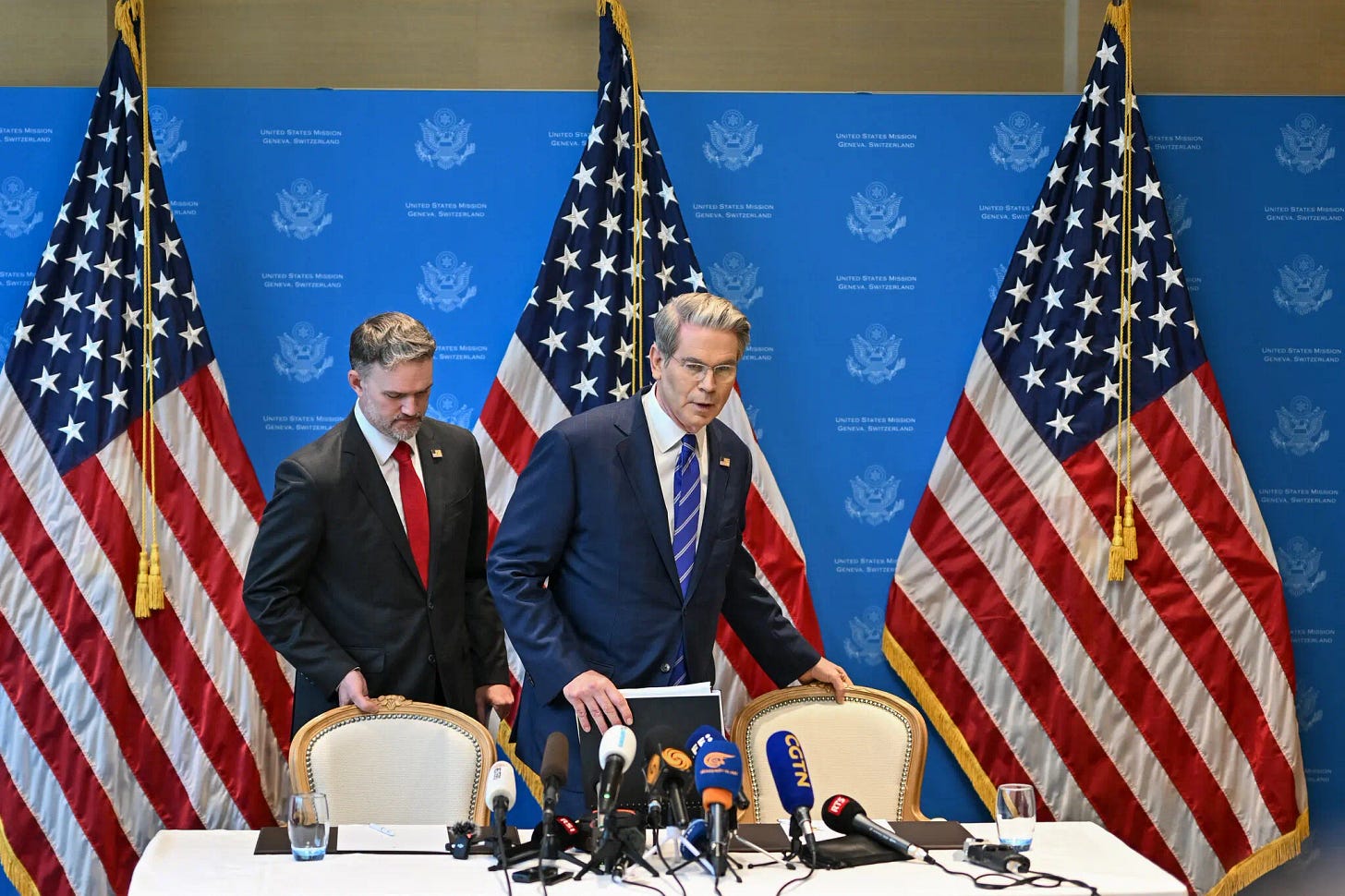Today's News: U.S. and China Temporarily Slash Tariffs
The United States and China have agreed to reduce tariffs on each other’s goods for 90 days, temporarily easing a high-stakes trade war that had severely impacted global markets.
Photo: Fabrice Coffrini/Agence France-Presse
Overview
Date: May 12, 2025
Topic: U.S. and China Temporarily Slash Tariffs Amid Trade War De-escalation
Summary: The United States and China have agreed to reduce tariffs on each other’s goods for 90 days, temporarily easing a high-stakes trade war that had severely impacted global markets, supply chains, and bilateral economic relations. Following marathon talks in Geneva, the U.S. lowered tariffs on Chinese imports from 145% to 30%, while China dropped its levies from 125% to 10%. The agreement includes a suspension of non-tariff retaliatory measures and the creation of a framework for continued negotiations. Although both sides presented the deal as a step toward stability, analysts cautioned that underlying trade disputes and strategic tensions remain unresolved.
Sources
The New York Times: U.S. and China Agree to Temporarily Slash Tariffs in Bid to Defuse Trade War
CNN: US and China agree to drastically roll back tariffs in major trade breakthrough
NBC News: U.S. and China agree to slash tariffs for 90 days as trade talks continue
Fox Business: US, China announce reduced tariffs for 90 days after trade talks
The Washington Post: U.S., China agree to lower most tariffs for 90 days amid trade talks
The Wall Street Journal: Markets rally on tariff rollback, with more negotiations planned; Nasdaq rises 4% and enters new bull market
Key Points
The agreement reduces U.S. tariffs on Chinese goods from 145% to 30% and Chinese tariffs on U.S. goods from 125% to 10%, effective for 90 days.
Both governments described the pause as a chance to continue negotiations and avoid a full economic decoupling.
A new bilateral mechanism for trade dialogue was created, led by top economic officials including U.S. Treasury Secretary Scott Bessent and China’s Vice Premier He Lifeng.
The fentanyl-related 20% U.S. tariff remains, as does the baseline 10% universal tariff on nearly all foreign goods.
Non-tariff retaliatory measures by China (such as rare-earth export bans, corporate blacklists) will be suspended or revoked.
Unique Highlights
The New York Times emphasized Trump’s concession despite past resistance and the economic pressure behind the move, as well as friction over prior U.S.-China deals under the Biden administration.
CNN detailed financial market reactions and noted that the rollback was far more extensive than anticipated, citing analysts who called it a “best-case scenario.”
NBC News quantified household impacts, citing a Yale estimate that U.S. tariff levels would still cost consumers $2,800 annually, and discussed shipping volume declines.
Fox Business quoted U.S. Trade Representative Jamieson Greer, highlighting that only China retaliated, unlike other U.S. trading partners.
The Washington Post included Chinese state media responses portraying China as the more composed party and highlighted domestic Chinese economic challenges.
The Wall Street Journal featured market performance data and skepticism among analysts about the sustainability of the truce, noting potential for resumed escalation.
Contrasting Details
The Wall Street Journal and The New York Times questioned whether the agreement included any substantive Chinese concessions, while CNN and Fox Business presented it as a joint win.
The Washington Post described the rollback as more symbolic than structural, emphasizing that deep divisions persist, while NBC News and Fox Business leaned into optimistic framing about continuing talks.
CNN noted that China had previously refused to negotiate under pressure but reversed course, whereas The New York Times portrayed Beijing as strategically holding out until the U.S. relented.
NBC News and The Washington Post noted that the remaining tariffs still place the U.S. in historically high protectionist territory, tempering enthusiasm about the deal.
The Newsie Project uses AI to summarize, compare, and contrast the reporting of the major US and world online news sources.
This is an evolving project. Tools, approaches, and output formats will change over time. The Newsie Project does not attempt to provide a definitive capsule of any news story. While the incidence of errors in these summaries is low, and I attempt to spot-check details, AI tools can hallucinate. Please click through and read the articles for details (some may be paywalled).


